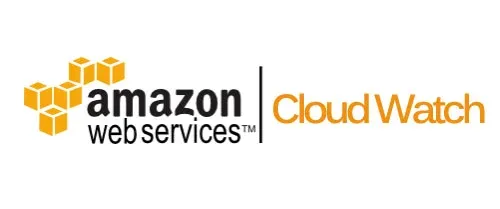The Intersection of Cloud and Agile: Boosting Development Productivity

Published on 25 April 2025 by Zoia Baletska

Modern software development thrives at the intersection of cloud computing and agile methodologies. Organizations leveraging both experience faster development cycles, improved collaboration, and more reliable software delivery. But how exactly do cloud and agile work together to enhance developer productivity?
In this article, we’ll explore how cloud-driven agile development helps teams ship faster, scale smarter, and optimize workflows.
How Cloud Computing Enhances Agile Development
1. Accelerated Development with On-Demand Resources
Agile emphasizes rapid iteration, but traditional on-premise infrastructure often slows teams down. Cloud computing solves this by providing on-demand access to computing power, databases, and development tools.
💡 Example: A startup using AWS or Google Cloud can spin up test environments in minutes rather than waiting for IT to provision servers.
Key Benefits:
-
No hardware procurement delays
-
Fast access to scalable resources
-
Automated infrastructure setup with Infrastructure as Code (IaC)

2. Continuous Integration & Deployment (CI/CD) at Scale
Agile relies on frequent releases, which cloud platforms enable through automated CI/CD pipelines. Services like GitHub Actions, AWS CodePipeline, and GitLab CI/CD allow developers to automate builds, tests, and deployments.
💡 Example: Netflix deploys hundreds of updates daily using cloud-based CI/CD pipelines.
Key Benefits:
-
Faster release cycles with automated testing
-
Immediate feedback loops for developers
-
Reduced risk of deployment failures

3. Improved Collaboration with Cloud-Based Dev Environments
Agile teams work in short sprints, requiring seamless collaboration. Cloud-powered tools like GitHub Codespaces, AWS Cloud9, and JetBrains Space provide remote development environments that eliminate setup inconsistencies.
💡 Example: A distributed engineering team working on the same project can instantly access a pre-configured cloud IDE, avoiding “works on my machine” issues.
Key Benefits:
-
Remote-friendly development environments
-
Consistent toolsets across teams
-
Reduced onboarding time for new developers
4. Scalability & Elastic Infrastructure
Agile teams need infrastructure that adapts to changing demands. Cloud platforms offer serverless computing (AWS Lambda, Google Cloud Functions) and auto-scaling capabilities, ensuring resources match workloads dynamically.
💡 Example: An e-commerce platform automatically scales up during Black Friday traffic spikes, ensuring smooth customer experiences without over-provisioning servers.
Key Benefits:
-
Cost efficiency with pay-as-you-go models
-
Reduced manual infrastructure management
-
Higher system reliability during peak loads
5. Enhanced Security & Compliance
Cloud providers handle security patches, compliance, and monitoring, reducing the operational burden on agile teams. Features like automated backups, IAM (Identity & Access Management), and security auditing ensure teams can focus on development.
💡 Example: A healthcare startup using AWS can easily maintain HIPAA compliance through cloud security policies rather than managing compliance manually.
Key Benefits:
-
Built-in security best practices
-
Automated threat detection & response
-
Compliance support for industry regulations
Real-World Impact: How Companies Benefit from Cloud & Agile
🚀 Spotify’s Cloud-Enabled Agile Framework
Spotify’s microservices architecture, powered by the cloud, allows teams to work independently while continuously delivering updates. By leveraging AWS for infrastructure and Kubernetes for container orchestration, Spotify accelerates feature development without bottlenecks.
🔄 Amazon’s DevOps & CI/CD Efficiency
Amazon uses a cloud-native DevOps approach to deploy updates every 11.7 seconds. Their automated pipelines enable seamless software releases, helping them innovate faster while maintaining stability.
📈 Agile Analytics for Productivity Insights
Tools like Agile Analytics offer data-driven insights into developer workflows, measuring productivity trends, sprint efficiency, and error resolution speed. By integrating cloud-based analytics, teams optimize their agile delivery process.

Why Cloud & Agile are the Future of Development
Cloud computing and agile methodologies form a powerful synergy that accelerates software development, enhances team collaboration, and improves system reliability. By leveraging scalable cloud infrastructure, automated CI/CD, and cloud-powered analytics, organizations can drive continuous innovation.
📌 Key Takeaways:
-
Cloud eliminates infrastructure bottlenecks, supporting rapid agile iterations.
-
Automated CI/CD pipelines enable faster, more reliable releases.
-
Cloud-based development tools improve collaboration in remote teams.
-
Scalable resources adapt to demand, optimizing performance and costs.
-
Cloud-driven analytics provide actionable insights to boost productivity.
Embracing cloud-powered agile development is no longer optional — it’s the key to staying competitive in a fast-evolving software landscape. 🚀
Supercharge your Software Delivery!
Implement DevOps with Agile Analytics
Implement Site Reliability with Agile Analytics
Implement Service Level Objectives with Agile Analytics
Implement DORA Metrics with Agile Analytics



